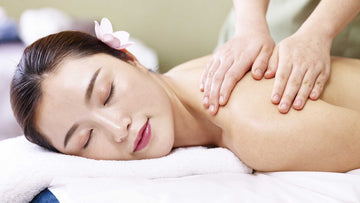
Japanese Shiatsu server $60.00/30minute

Acupressure Principles and Theory
Like other types of massage, acupressure combines osteopathy, lymphatic drainage, and physical therapy, but with one major difference: Chi (pronounced "chee"), the body's natural flow of energy, is believed to flow through channels, or meridians, within the body. Acupressure practitioners attribute health conditions and diseases to blockages and imbalances of Qi and apply pressure to specific body meridians to control this energy flow and restore harmony to the body.

The five elements theory is an important aspect of shiatsu therapy, deeply rooted in the traditional healing traditions of China and Japan. The five elements - wood, fire, earth, metal, and water - represent different aspects of human experience, such as emotions, organs, and seasons. The shiatsu therapist considers the patient's element type when designing a treatment plan. They can tailor treatment programs to address underlying issues by identifying dominant or unbalanced elements.
Acupressure massage technique
Shiatsu techniques include applying pressure to specific points on the body, stretching, slapping and kneading. Shiatsu therapists use their fingers, thumbs, palms, and elbows to apply pressure to the meridians or energy channels in a rhythmic, methodical manner. Shiatsu techniques improve blood and lymphatic circulation, release tension and stiffness, and promote relaxation and balance. The pressure placed on the meridians helps stimulate the body's natural healing mechanisms, reduces pain and discomfort, and enhances overall health.
A brief history of Shiatsu
Shiatsu has a long and fascinating history. The word "shiatsu" comes from two Japanese words, "shi" for finger and "atsu" for pressure. Based on traditional Chinese medicine principles, shiatsu teaches that energy channels, or meridians, make up the human body. Shiatsu helps balance the flow of energy in these meridians by applying pressure to specific points on the body (i.e. acupressure points or acupressure points).
In the 6th century, Buddhist monks introduced various healing arts to Japan, where shiatsu later developed and flourished. Shiatsu became popular in Japan in the early 20th century and was recognized as an official form of treatment by the Japanese government in 1964. Since then, shiatsu has gained popularity around the world, becoming a common practice among massage therapists, acupuncturists, and other healthcare professionals in many countries.
Introducing the principle of shiatsu into the Japanese massage chair
The history of Japanese massage chairs dates back decades. The first massage chairs were developed in the 1950s to replicate shiatsu techniques. These early chairs were rudimentary and relied on simple mechanical movements to simulate the sensation of a massage. Over time, advances in technology and design have transformed the Japanese massage chair into the complex device we know today.
A massage chair, no matter how advanced, cannot possess the wisdom and judgment of a chiropractor. But they can faithfully interpret shiatsu, offering many therapeutic and health benefits that you can enjoy at home, as long as they have sufficiently advanced scanning technology to accurately identify acupressure points and - most difficult of all to achieve - can be choreographed to the subtle movements, speed and pressure of the shiatsu master's hands.








